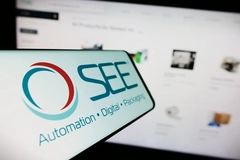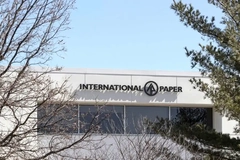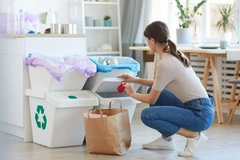Dow sustainability director: Recycling investment needed to realize circular plastics economy
26 Apr 2022 --- Dow is boosting the circular plastics economy with recycle-ready PE packaging innovations, but waste management infrastructure needs investment and new technologies to improve recycling rates, according to Han Zhang, global sustainability director at Dow Packaging & Specialty Plastics.
On Earth Day 2022, the company spotlighted several recent packaging innovations, including laundry detergent pouches that received China’s first “Double E” (easy-to-collect and easy-to regenerate) label, shelf life-extending poultry packaging, and recyclable toothpaste tubes.
In this exclusive interview with PackagingInsights, Zhang explores how monomaterial packaging can bolster the circular plastics economy, why environmental sustainability has been a higher priority for executives since COVID-19, and how the Chinese government has integrated life cycle thinking into its circular economy policy design.
Mastering monomaterials
PE can be recycled. However, if PE is mixed with other polymers, recycling can become difficult, which is why multimaterial laminate is hard to recycle.
“It’s like oil and water – ever try washing your hands with oil on them? You can’t. To solve this challenge, one solution is to not introduce oil in the first place. If we can replace multimaterial with monomaterial and maintain the same performance, we can make packaging readily recyclable, explains Zhang.
Dow has developed and commercialized All-PE solutions, allowing brands like Liby and Finish to make their laundry detergent pouches fully recyclable. Enabled by Dow’s Innate TF-BOPE, Liby’s recyclable packaging earned the first “Double E” label in China. The label helps consumers distinguish recyclable packaging from other packaging.
 Dow says 85% of its packaging applications are now recyclable.“When multimaterials are still needed for certain barrier properties, Dow also developed compatibilizer solutions to allow for different polymers to be melted and recycled together, which we’ve done for brands like Kellogg’s in its Bear Naked granola application,” continues Zhang.
Dow says 85% of its packaging applications are now recyclable.“When multimaterials are still needed for certain barrier properties, Dow also developed compatibilizer solutions to allow for different polymers to be melted and recycled together, which we’ve done for brands like Kellogg’s in its Bear Naked granola application,” continues Zhang.
“To go back to our oil and water analogy, we made the soap that allows the oil to be removed from your hands.”
Full life cycle thinking
Zhang claims that a circular world does not have to be far out of reach, but it will not be possible without collaboration across the value chain, including policymakers, customers, brand owners, waste management companies, and NGOs.
“Among governments specifically, they have a critical role to play in enabling a circular economy for plastics by developing fit-for-purpose national and local waste management plans and legislation, which I believe should be based on full life cycle assessments.”
“The Chinese government, for instance, has integrated full life cycle thinking into its circular economy policy design to ensure systematic evaluation of the social, economic, and environmental impacts of a policy.”
A recent study by Tsinghua University, China, found that if all plastic packaging consumed per year in the country were replaced with packaging made from other materials that provide the same function, overall life cycle environmental impact would increase by 2.3 times.
The environmental costs incurred due to the greenhouse effect would increase from US$18.2 billion per year in the plastic packaging scenario to US$35.1 billion per year in the alternative packaging scenario.
Recycling investment needed
Dow has also introduced Phormanto technology, a solution for vacuum thermoformed packages that increases the shelf life of poultry by up to two weeks without compromising product freshness and quality.
The leak-proof packaging technology reduces costs and waste in every step of the value chain. Phormanto is made of a single-material plastic, so it can fit neatly into the well-established recycle stream that already exists for PE. However, investment in PE recycling is required, argues Zhang. Liby’s laundry detergent pouch received China’s first “Double E” label.
Liby’s laundry detergent pouch received China’s first “Double E” label.
“Is it necessary to have recycling infrastructure in place for PE solutions? It depends. For original packaging, yes, and we need to have better recycling systems in place. However, the issue is that today’s waste management infrastructure requires investment and innovative technology to improve the recycle rates of flexible packaging,” he says.
“That’s why Dow is joining forces with like-minded partners across the value chain to mobilize funding and investments to build and improve waste management capabilities for flexible packaging. This includes being a founding member of the Alliance to End Plastic Waste, an NGO that brings together industry players, local communities and governments alike to drive new methods to make recycling work.”
“On the innovation side, we’re also very focused on material recovery. In fact, Dow is one of the founding members of Material Recovery for the Future, where we’re partnering to develop technology to improve the efficiency of plastic sorting. Dow is also working with Holy Grail 2.0.”
Executives get green
Meanwhile, the COVID-19 pandemic has increased environmental concerns among industry decision-makers. Dow’s recent whitepaper, The Path to a Circular Economy for Plastics found that 70% of C-level executives indicated that they now treat recycling as a higher priority than before the pandemic.
“With this increased demand for companies to use more recycled materials in their products, there’s a huge market opportunity for circular packaging solutions, and we’re poised to take our share at Dow – already, we’ve enabled 85% of Dow packaging applications to be recyclable,” adds Zhang. Dow has commercialized All-PE solutions, allowing brands to hit recycling targets.
Dow has commercialized All-PE solutions, allowing brands to hit recycling targets.
Recyclable toothpaste tubes
According to Dow, unrecyclable toothpaste tubes alone account for an estimated 100,000 tons of waste each year. Since toothpaste is sensitive to oxygen and humidity, manufacturers traditionally create tubes made from a combination of different plastics and a layer of aluminum. While this combination protects the toothpaste inside, it makes the packaging nearly impossible to recycle.
Breaking the mold, Dow has introduced PE-based technology that solves the recyclability issue by removing the aluminum layer, while still protecting the integrity of toothpaste products. Advancing progress toward its Close the Loop target, Dow enabled the commercialization of the aluminum-free, recyclable toothpaste tube worldwide.
“Designing for recyclability is a huge strategic focus for Dow to help ensure plastic is returned to a closed-loop system, retain its value, and contributes to a circular economy. We’ve concentrated on developing and aligning products and technologies to help our customers design packaging with all aspects of recycling in mind,” says Zhang.
“Last year, using our Pack Studios in-house conversion capabilities, we commercialized a global line of mechanically recycled plastic resins, branded Revoloop – a family of products that can be used in either flexible or rigid plastic packaging applications.”
“It’s the first post-consumer recycled product in Dow’s plastics circularity portfolio to incorporate up to 70% of recycled plastic, and we’re looking forward to leveraging this new solution to help our customers reach their goals for more environmentally sustainable packaging,” he concludes.
By Joshua Poole












